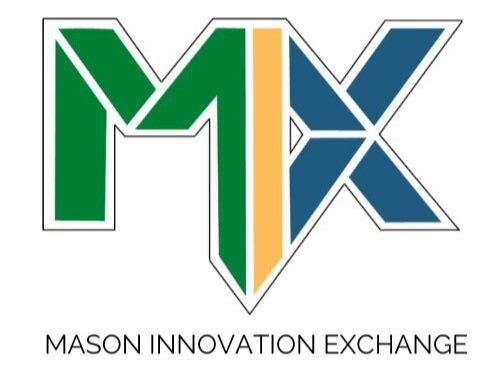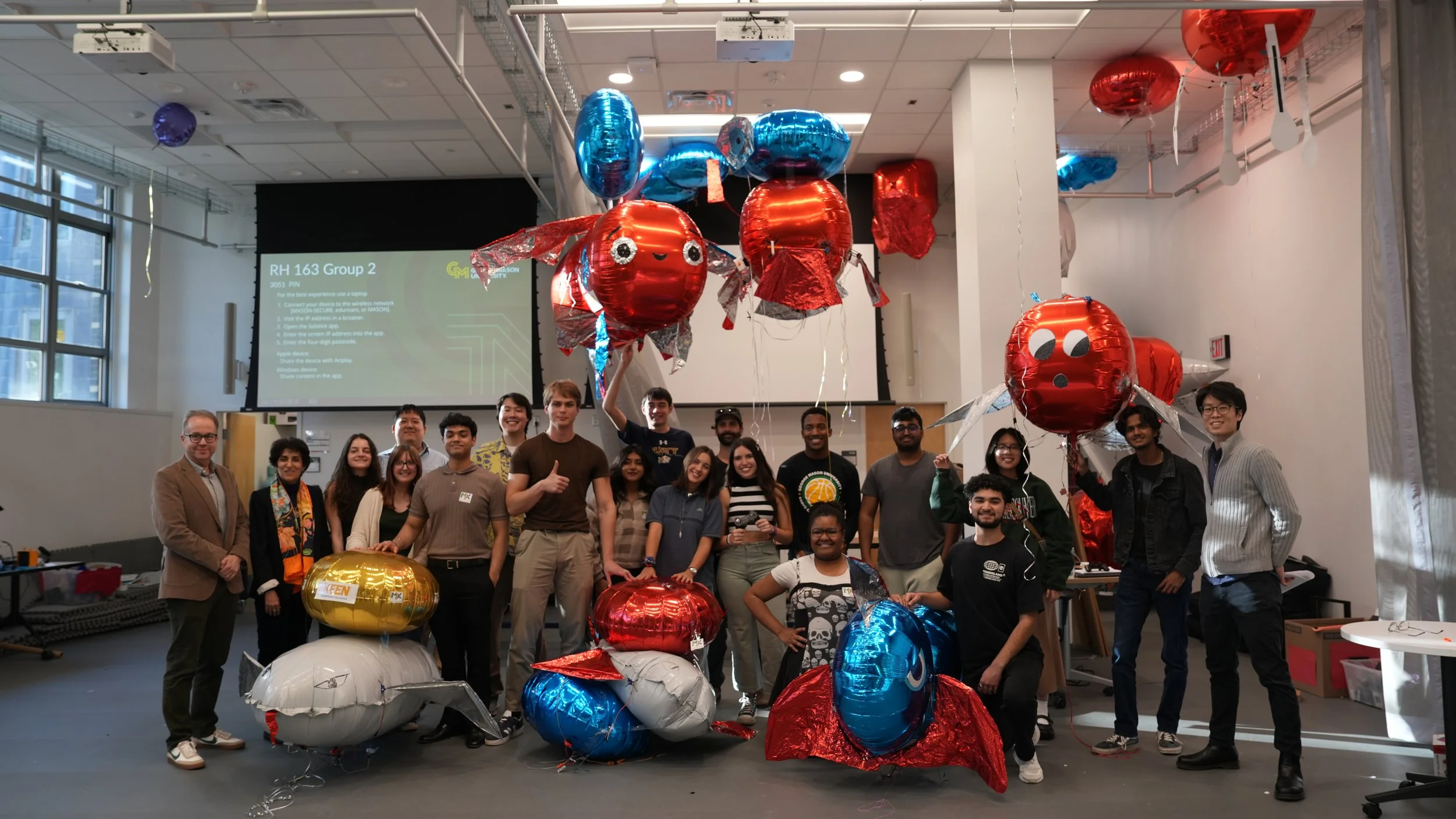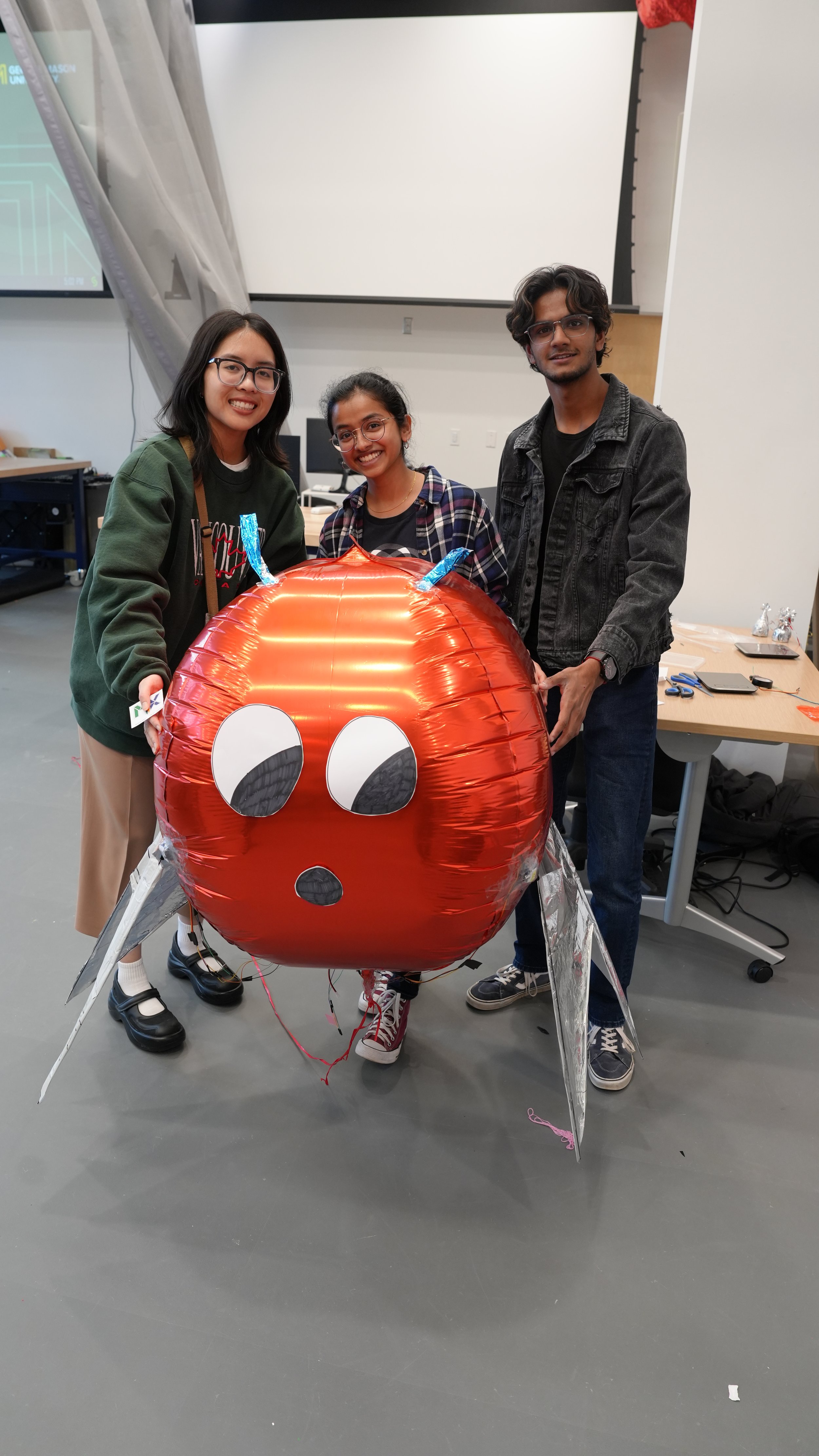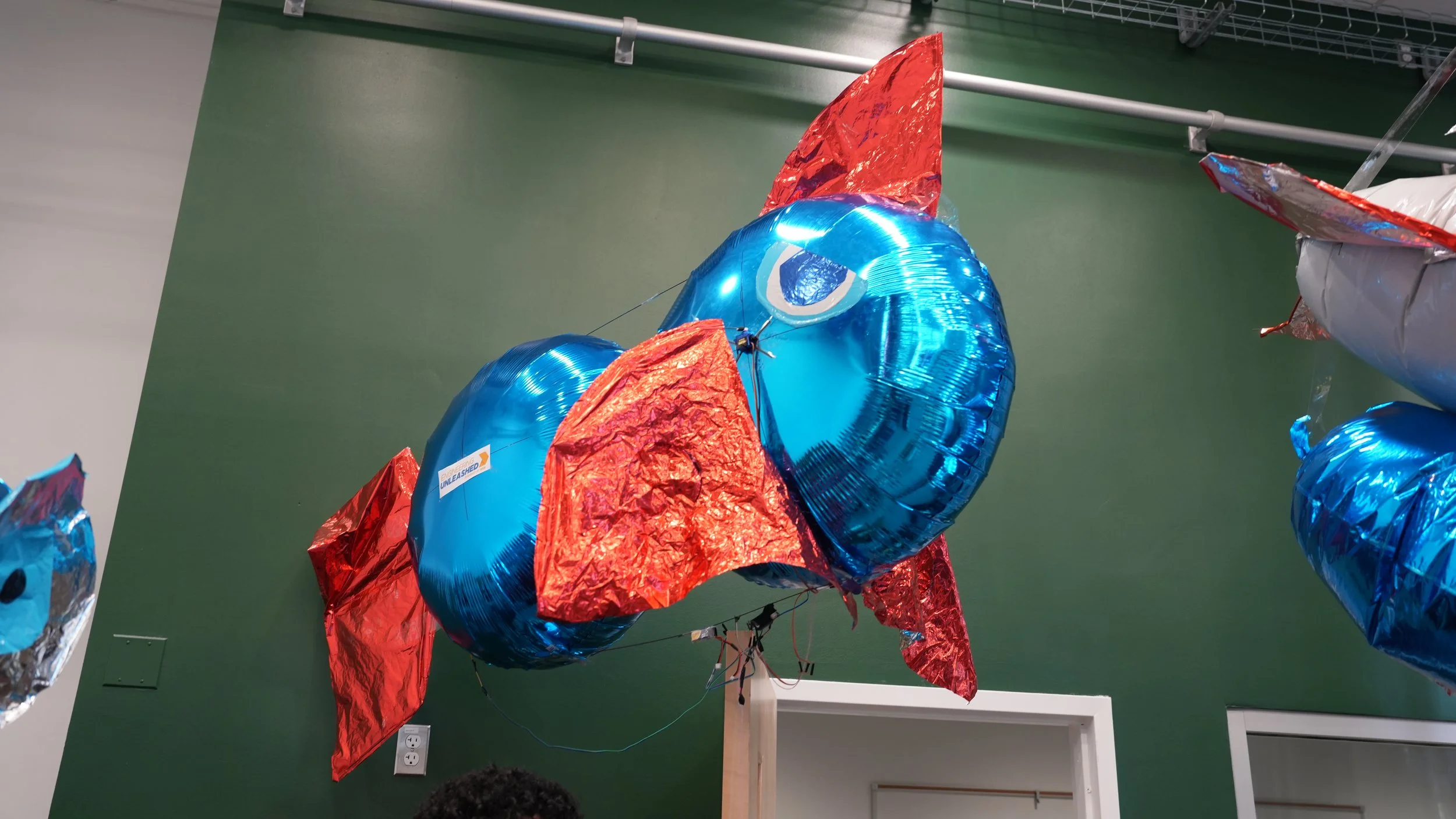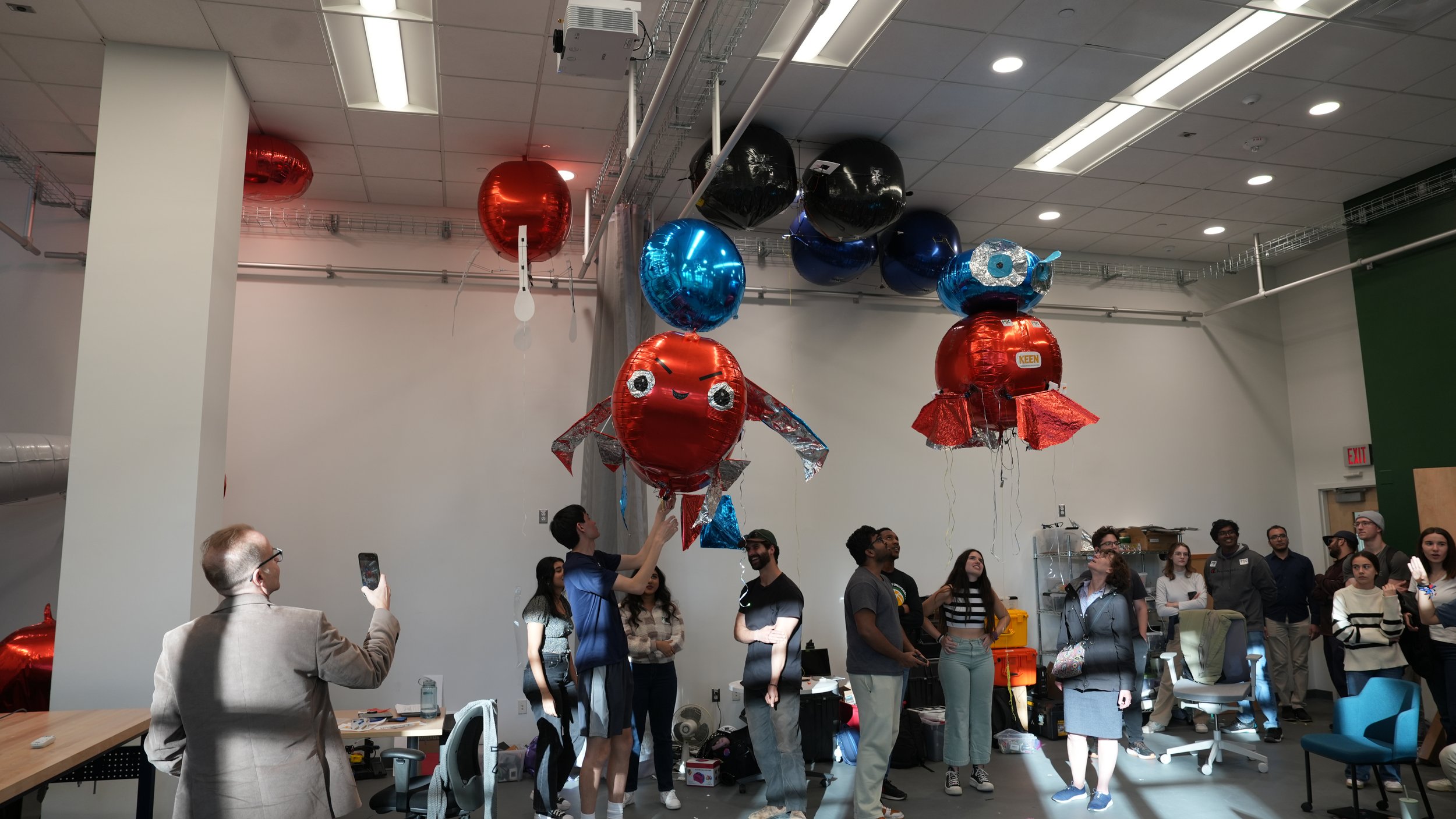Student BLIMP Design Wins $1,000
Spring 2025 Cohort. Photo by the MIX.
The Spring 2025 BLIMP (Biologically-inspired, Lighter-than-air, Instructional, Mechatronics Program) final presentation at the MARC (Mason Autonomy and Robotics Center) marked a significant milestone in interdisciplinary education. Hosted by the Mason Innovation Exchange and led by Assistant Professor Daigo Shishika from the Mechanical Engineering Department, this eight-week course immersed students in the design and construction of autonomous, flapping-wing blimps.
A Fusion of Engineering and Innovation
The BLIMP program offered a comprehensive, hands-on introduction to unmanned aerial vehicles (UAVs) and advanced manufacturing. Students delved into mechanical systems, microcontrollers, computer vision, and aircraft dynamics, culminating in the creation of bio-inspired, lighter-than-air vehicles. Each team of three to four students was responsible for designing and building their own flapping-wing blimp, to foster collaboration and practical problem-solving through the use of UAV’s. Students explored how body shape affects aerodynamic characteristics and vehicle stability, employing additive manufacturing techniques such as CAD design and 3D printing to develop their prototypes.
Throughout the program, students engaged in a progressive learning experience:
Week 1: Introduction to autonomous blimps and microcontrollers.
Week 2: Exploration of gears, linkages, and flapping-wing mechanisms.
Week 3: Study of PID controllers, feedback control, and behavior design.
Week 4: Construction of the blimp body and attachment of components, focusing on center of gravity and buoyancy.
Week 5: Integration of sensing and actuation systems, controller tuning.
Week 6: Initial flight tests to assess stability and autonomy.
Week 7: Final preparations and additional flight tests.
Week 8: Final technical presentations to judges.
Supplementary workshops on 3D printing, soldering, and electronics provided students with essential skills for their projects.
The program concluded with a design competition, where teams presented their autonomous blimps to a panel of judges. This event highlighted the students' ingenuity and the practical application of their interdisciplinary knowledge. Participants who successfully completed the course received a digital micro-credential from GMU, enhancing their resumes and professional portfolios.
The Spring 2025 BLIMP final presentation not only showcased the students' technical achievements but also underscored the value of experiential learning in engineering education. By bridging theoretical concepts with real-world applications, the program prepares students for future challenges in robotics and autonomous systems.
For more information on the BLIMP program and other innovative courses offered at GMU, visit the Mason Innovation Exchange. The Fall 2025 applications will open in late August.
Judges discussing the results of the presentations
